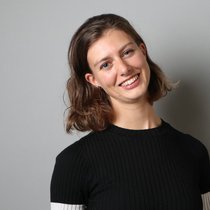The Transparent Crowd Monitoring Camera is an outdoor installation piece that demonstrates how sensing in public space works, while increasing transparency and awareness of sensing technologies in general.
“End of 2021, students at Leiden University and Utrecht University spoke out against the use of counting cameras in lecture halls and on campus, claiming they did not really trust that the cameras were just counting. What could be done to raise trust, or convince people that counting cameras are really just counting? We came up with three interventions to explore this question.”
The project explores which additions or changes to a crowd monitoring setup have a positive contribution to the acceptance and understanding of a sensor in public space. For instance showing the number of people that are being counted or changing the design of the sensor.
The focus of the project is to establish a catalog of affordances that will have a demonstrated effect to improve people’s experience around a crowd monitoring sensor. The City of Amsterdam will implement the insights into the requirements for crowd monitoring solutions.
Three setups
Three camera setups are being tested:
- A standard camera with an led matrix that shows information about the counting process. To make the actual counting process visible.
- A custom casing around a standard camera with a form factor that mimics that of a photocamera.
- A standard camera with an AR ‘explanatory overlay’. Below the camera there is a ‘marker’ sign, that is used to guide the AR system. To show extra information for passers-by who are interested in learning more about who collects the data and for what purpose.
“During our research, we ask ourselves these questions: Does the design help understand what a crowd camera does? How do we best communicate their function? Is it important for people to know what the cameras in the city do? To which extent is transparency desirable when it comes to data collection in public space?”
Sofie-Amalie Torp Dideriksen, designer & researcher, Responsible Sensing Lab

The current iteration will be deployed for a period of 2-3 weeks. The goal is to be able to test the design with everyday visitors of the Marineterrein to find out if the design has the desired effect of making the visitors understand how the device counts people and if they can form an informed opinion about how they feel about that.